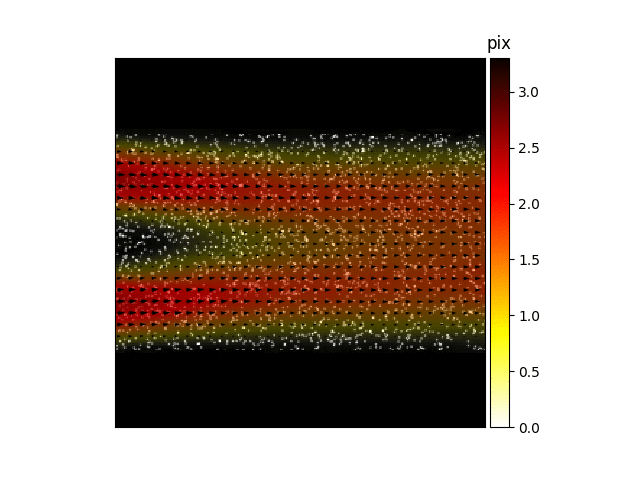Endodontics Diagnosis using Computer Vision
This is a joint research between the Flow Diagnostics Lab (Bandung Institute of Technology) and Laser Research Center in Dentistry, Bandung.
Initially, I developed a deep learning flow estimator, using LiteFlowNet model with PyTorch, for Particle Image Velocimetry (PIV) experiment for my Master’s thesis (visit here for the project). Most of the time, PIV experiments only use cross-correlation method as the digital imaging solver. The PIV-LiteFlowNet-en model produces result with higher resolution and it allows the program to capture smaller scale fluid structure with much higher accuracy. This enables researchers to explore more within the small vortex domain, both quantitatively and qualitatively. Another added value is that the inference time is now 35 times faster than the previous PIV program because of the GPU utilization (even on entry-level laptop GPU for students). 
After further discussions with researchers from the Laser Research Center in Dentistry, Bandung, we decided to use the LiteFlowNet model to estimate the flow within root canal irrigation. The irrigation experiments were conducted with different methods (e.g., Eddy tip vibration, EndoActivator, Laser, Ultrasonic, etc) and recorded with a high-speed camera. The LiteFlowNet model was then used to estimate the flow movement during the experiments and visualize it. Therefore by using the estimate flow velocity and sheer stress; the flow pattern studies can be done on how it affects the irrigation performance. 
As of right now, 2 articles have been published from this research collaboration:
- Visualizing the velocity fields and fluid behavior of a solution using artificial intelligence during EndoActivator activation. Published in Dental Journal (Majalah Kedokteran Gigi), September 2022.
- Application of artificial intelligence in a visual-based fluid motion estimator surrounding a vibrating EDDY® tip. Published in Giornale Italiano di Endodonzia, May 2022.
